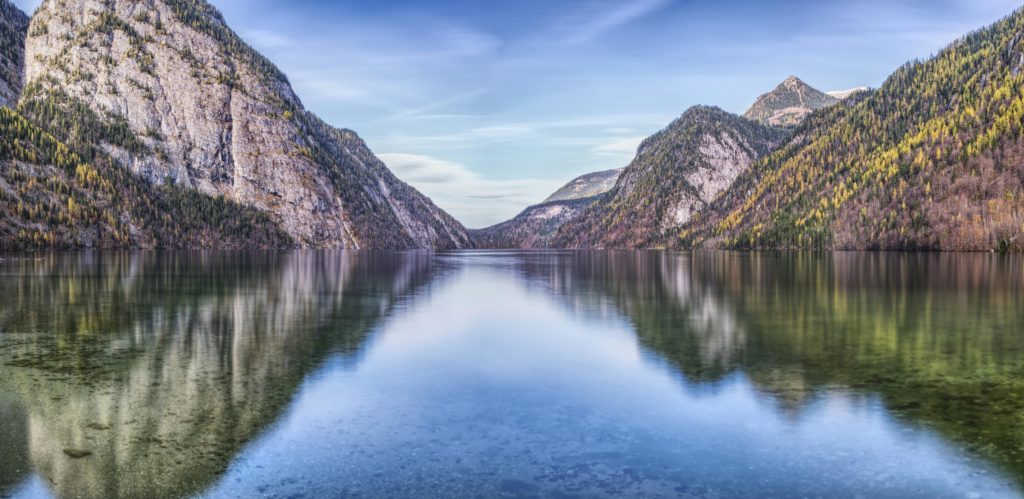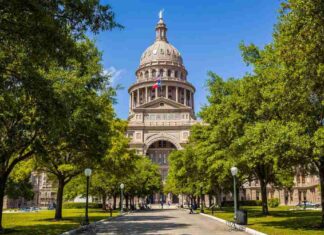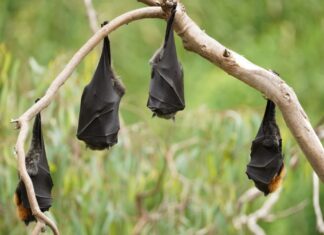
Professional traveler Chris McCormack shared the beauty and adventure of U.S. national parks with residents at the Moorestown library earlier this month.
McCormack attended Coastal Carolina University in South Carolina, but his college experience wasn’t really what he thought it would be. Before he graduated, he decided to study abroad, so he traveled to Australia and stayed for five months.
“It was the most important decision that I ever made in my entire life, so since that day of me getting on a plane and (seeing) … the coastline from the window of the airplane, I said, ‘I finally know what I want to do,’” McCormack recalled. “It had never been so clear in my whole life.
“It was a really liberating moment for me, and I said, ‘I’m going to travel the world and I’m going to make a career out of it,’” he added. “Ten years later, I’m still traveling the world and making a career out of it now. So it’s been a pretty cool journey.”
There are currently 63 national parks in the country, according to the website for Kendal at Oberlin, a retirement community in Oberlin, Ohio. Since the inception of the National Park Service (NPS) in 1904, more than 15 billion park visits have been registered.
Each year, NPS ranks the parks and the service sites by the number of recreation visits. The top 10 for 2022 included Great Smoky Mountains National Park, with 12,937,633 visitors; Grand Canyon National Park, at 4,732,101 visitors; Rocky Mountain National Park, at 4,300 visitors; and Acadia National Park at 3,970,260 visitors.
Acadia is located primarily on Maine’s Mount Desert Island and includes 27 miles of historic motor roads, 158 miles of hiking trails and 45 miles of carriage roads.
“If you ever look at a map of Acadia, there’s little pockets, little bubbles inside the park that you can’t visit,” McCormack explained. “That’s because that’s still privately owned. Another cool feature about Acadia is that they have this thing called the horse carriage roads and the horse carriage trails … It’s really cool, because you don’t need a horse to go on it so you can take a walk, you can ride your bicycle, you can go for a run, whatever you want to do, and it’s a nice way to see the national park …
“It’s the first national park that was established to the east of the Mississippi River,” he added. “Yellowstone was number one overall, but Acadia was the first one east of the Mississippi River.”
The Great Smoky Mountains National Park region is divided down its length by the Tennessee–North Carolina border, according to the website for the National Park Foundation. Called the Smokies due to ever-present morning fog, the mountain range is renowned for the diversity of its plant and animal life, its ancient mountains and its history of southern Appalachian Mountain culture.
“This is actually probably the reason why it’s the number one, and it’s always number one and it never changes,” McCormack noted. “It’s free entry; you don’t have to pay to go inside. If it’s for free, it’s for me, and a lot of people practice that mentality.”
Glacier National Park in Montana features alpine meadows, deep forests, waterfalls, about 25 glistening glaciers and 200 sparkling lakes. Relatively few miles of road exist in its 1,600 square miles of picturesque landscape, according to www.visitmt.com.
“Glacier National Park has over 700 miles of hiking trails … so you can go on a hike in Glacier National Park for five days, and on day three, you want to make sure you’re going in the right way …
“This place is just absolutely incredible … There’s a trail for everybody.”
Crater Lake National Park in Southern Oregon at the Cascade Mountains lies inside a caldera, or volcanic basin, and was created when the 12,000-foot-high Mount Mazama collapsed 7,700 years ago following a large eruption. Because the lake is filled almost entirely by snowfall, it is one of the clearest in the world.
“You can actually walk along the rim of the crater as short or as far as you want,” McCormack explained.
America’s national parks benefit the environment by supporting critical needs such as biodiversity, healthy eco-systems and key habitats; preserving endangered species; acting as a source of clean water and producer of clean energy; and reducing the impacts of natural disasters, according to the website for nonprofit EarthShare.
To explore or browse an array of national parks, visit www.nationalparks.org/explore/parks.









